Nature surprises us with various strange creatures, but the real wonderful creatures are in the depths of the seas and oceans. The type and way of life of these sea creatures surprises us and make us think about the possibilities that life gives.
The saltwater fish, known as sole is living proof of the strangeness of nature. Anyone fascinated by the creatures of the vast expanse of the sea will be interested to learn more about this interesting creature, which, above all, engages the attention of foodies.
General information about sole fish
Sole is a sea fish, a difficult but desirable catch by fishermen, because the size of the fish often greatly exceeds that of the fisherman and a lot of skill is required to remove it from the water. What is amazing about this fish?
Sole is represented by 5 main fish and belongs to the flatfish family. It lives only in the seas and oceans, having a preference for salt water and inhabiting considerable depths. It likes water temperatures from 3 to 8°C and therefore most often moves in arctic waters in clean waters. The Atlantic Arctic Ocean, the Barents Sea and the Sea of Japan are its natural habitats.
This fish lives up to 30 years of age and begins to produce offspring after 7-10 years of age.
Description of sole fish
The most interesting thing about the sole is the type of body it has. The fish is flat, with a length to width ratio of 3:1. The fish grows throughout its life and can reach a length of 2-5 meters and the width of the body is about 1/3 of its length, the weight sometimes exceeds 100 kilograms. However, the saltwater representative of the species is smaller - its length is no more than a meter and its weight is about 4 kilograms.
The appearance can be defined as amazing - the fish has an asymmetrical head, a round mouth that is shifted to the right, but the most unusual part is the eyes - they are located on the sides of the body and the lower part of it is gray-white.
Sole is a predatory benthic fish. It has sharp teeth with which it grabs other sea creatures. The fish's seemingly clumsy thumbs are very quick when hunting. This fish waits in ambush for a long time and unexpectedly attacks the victim, being able to chase it, if necessary.
Sole is not interested in its offspring, although it is one of the most prolific fish. The female lays more than 3 million eggs at a time. Spawning begins in winter. She does not take care of them and the little ones learn from the very beginning to take care of themselves.
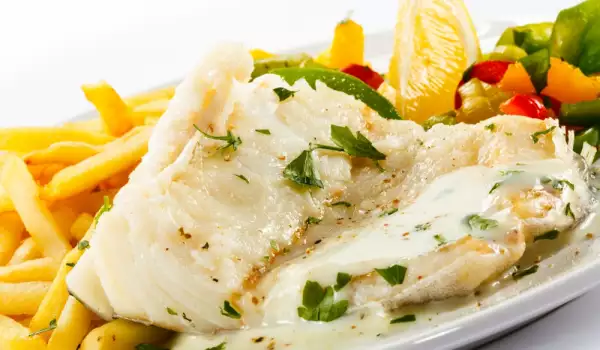
And to make this wonderful fish even more unusual, an interesting fact is that at first it looks like an ordinary fish and after the first year of life, its eyes are shifted to the sides.
Since this fish is the subject of active fishing, its population has greatly decreased and some species of sole are prohibited from fishing, as they are in the Red Book. Active fishing is not only due to the extreme experience in sport fishing, but also because of the quality of the meat of the fish.
Chemical composition of sole meat
This fish is an inhabitant of cold northern waters, which immediately gives an indication that the meat is saturated with fat. Its nutritional value depends on the place the fish lives. The further north the fish lives, the more fat it has. It also features high protein values from 11.3 to 18.9, as well as plenty of water, but no carbohydrates. Kilocalories are 190 to 100 grams of weight.
Of the 25 percent fat in fish, most are polyunsaturated omega-3 fatty acids. However, some of this fat is lost in the cooking process. Freezing loses half of this essential fat and salting the fish about 30 percent.
Beneficial properties of sole meat
The meat also contains almost all the vitamins that the human body needs. Liver and caviar are the richest in them.
Minerals are represented by potassium, calcium, sodium, phosphorus, zinc, iron, copper, zinc, selenium, iodine.
Liver and caviar are very healthy, but too fatty.
Since there are few bones in the fish and a lot of fat, the meat of this fish has high taste qualities and a beneficial effect on the human body.
This meat increases the elasticity of vessel walls, reduces the level of homocysteine in the blood, has an effect on cholesterol, lowers blood pressure, lowers blood viscosity, stimulates the breakdown of fats, normalizes metabolism, increases immunity.
The positive effects of sole meat has a beneficial effect on hypertension, atherosclerosis, varicose veins, eye diseases, rickets, liver cirrhosis, depression, lack of vitamins and many other health problems.
Harmful effects of sole meat
Despite the numerous benefits, there are some hidden harms in this meat that should be kept in mind.
It is not good to give to children under 7 years old, to be consumed by pregnant, allergy-prone, obese people, with stones in the bile ducts and kidneys, with increased levels of potassium in the blood.
Fish selection and storage
- the fish fillet must be white;
- it should not be thicker than 1.5 centimeters because it is a flat fish;
- there should be no layers of fat on both sides, they are distributed evenly over the entire fillet;

- the shelf life is 8 months at 18°C below zero.
Cooking sole fish
This fish is prepared in different ways. It can be salted, smoked, canned, fried, stewed, boiled or grilled. Caviar is suitable for breakfast.
When cooking, it should be borne in mind that the fish is oily and absorbs fat, so it becomes high-calorie when fried.
This fish goes well with various herbs - rosemary, sage, thyme, basil. White and pink pepper and nutmeg.
It is very tasty, prepared with vegetables, white wine and others.
Fine sole fish dishes are: sole with white wine, baked sole, sole with almonds or pine nuts, sole with saffron sauce and vegetables. Culinary masterpieces involving the fish are obtained when combined with king prawns and squid or other seafood.
An easy recipe is to bake it in dough and a sophisticated French recipe is to prepare it in the miller style, which recipe is a classic in French cuisine.
The fish fillet is a real delicacy, because it is very tender and is equally delicious fried in a pan or baked in the oven. A very interesting flavor is obtained when the fillet is cooked with spinach and cheese or bolder combinations with grapes, cream and red wine.
It must be served with slices of lemon or lemon juice. The fish also participates successfully in fish soup along with other saltwater fish.
Sole can be consumed both in the company of white and red wine, depending on the recipe according to which it is prepared. It is certainly a fish that can satisfy any culinary preference, bringing health benefits from its consumption. The recipes with it are numerous and allow for culinary experiments.
If you like to eat all kinds of fish, then check out our next suggestions:
- fish stew.
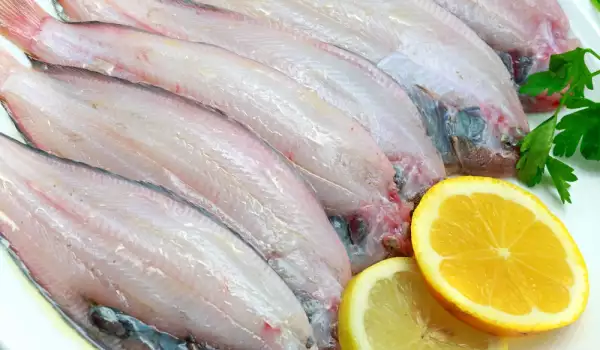

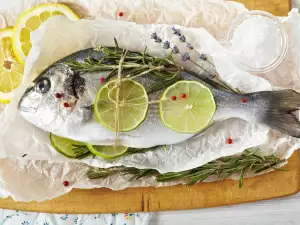
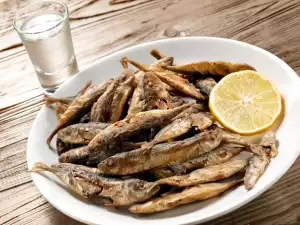
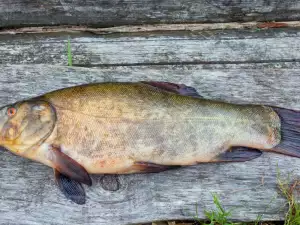
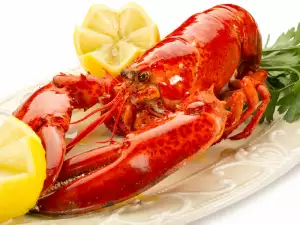
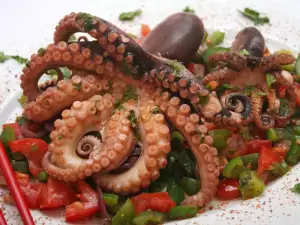


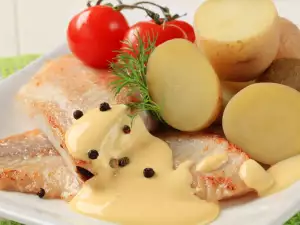
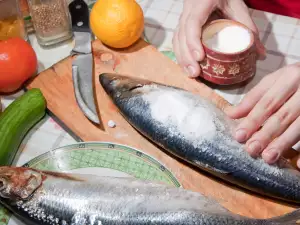



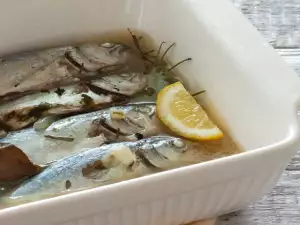
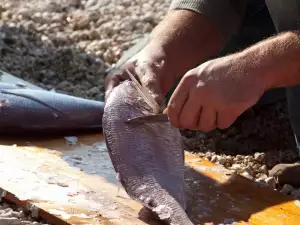




Comments